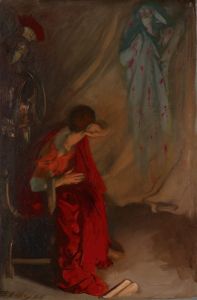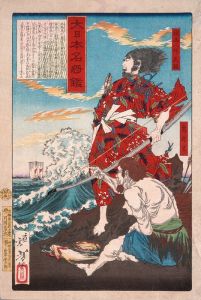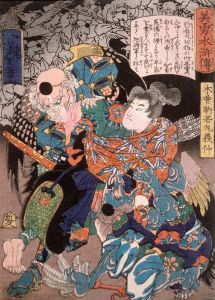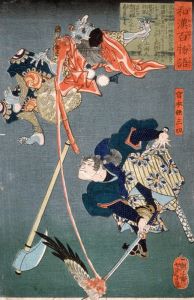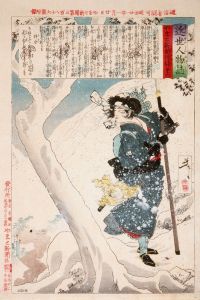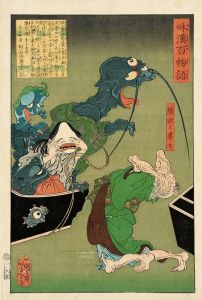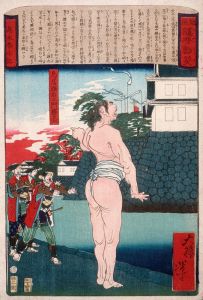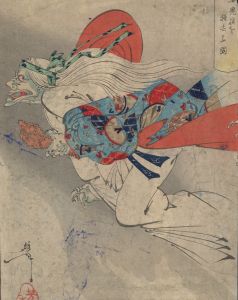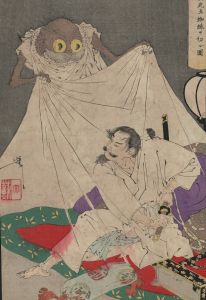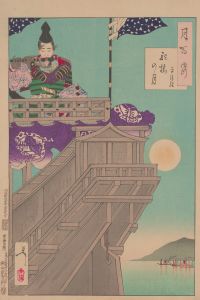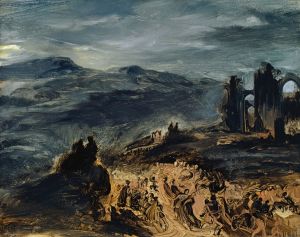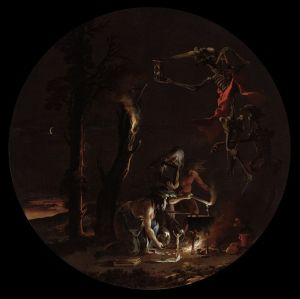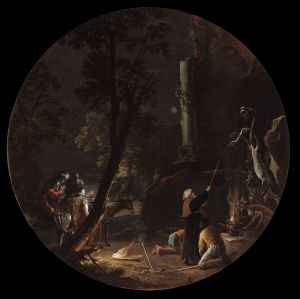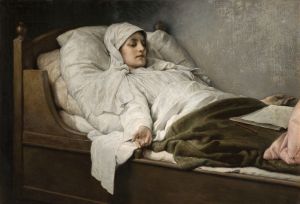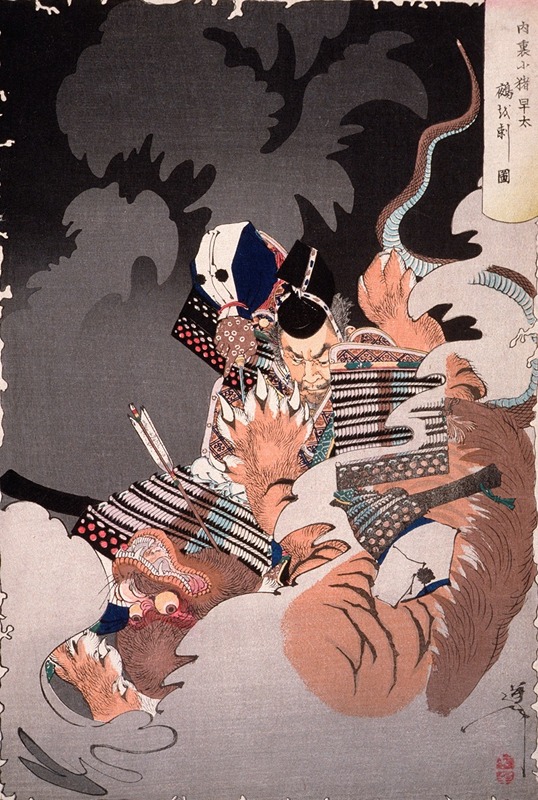
I No Hayata Kills the Nue at the Imperial Palace
A hand-painted replica of Tsukioka Yoshitoshi’s masterpiece I No Hayata Kills the Nue at the Imperial Palace, meticulously crafted by professional artists to capture the true essence of the original. Each piece is created with museum-quality canvas and rare mineral pigments, carefully painted by experienced artists with delicate brushstrokes and rich, layered colors to perfectly recreate the texture of the original artwork. Unlike machine-printed reproductions, this hand-painted version brings the painting to life, infused with the artist’s emotions and skill in every stroke. Whether for personal collection or home decoration, it instantly elevates the artistic atmosphere of any space.
Tsukioka Yoshitoshi was a renowned Japanese artist known for his work in the ukiyo-e genre during the late Edo and early Meiji periods. One of his notable works is "I No Hayata Kills the Nue at the Imperial Palace," which is part of his series "New Forms of Thirty-Six Ghosts" (Shinkei Sanjūrokkaisen). This series, created between 1889 and 1892, showcases Yoshitoshi's fascination with supernatural themes and his mastery in depicting dramatic and eerie scenes.
The artwork "I No Hayata Kills the Nue at the Imperial Palace" illustrates a famous Japanese legend involving a mythical creature known as the Nue. According to the tale, the Nue is a fearsome chimera with the head of a monkey, the body of a raccoon dog, the legs of a tiger, and a snake for a tail. This creature was believed to bring misfortune and illness, and it was said to have terrorized the Imperial Palace in Kyoto during the reign of Emperor Konoe in the 12th century.
The story goes that the Nue would appear at night, causing great distress to the emperor and his court. In response to this threat, a skilled archer named Minamoto no Yorimasa was summoned to deal with the creature. Yorimasa, along with his retainer I No Hayata, took on the challenge. Yorimasa shot the Nue with an arrow, and as the creature fell from the sky, I No Hayata bravely finished it off with his sword, ensuring the safety of the palace and its inhabitants.
Yoshitoshi's depiction of this event captures the tension and drama of the moment. His use of vivid colors and dynamic composition brings the legendary battle to life, highlighting the bravery and skill of I No Hayata. The artwork reflects Yoshitoshi's ability to blend traditional Japanese artistic techniques with a modern sensibility, making his work appealing to both contemporary audiences of his time and art enthusiasts today.
Yoshitoshi's "New Forms of Thirty-Six Ghosts" series, including the piece featuring I No Hayata, is significant not only for its artistic merit but also for its cultural importance. It represents a period in Japanese history where there was a growing interest in folklore and ghost stories, reflecting the societal changes and the blending of old and new beliefs during the Meiji Restoration.
The series is also a testament to Yoshitoshi's resilience and innovation as an artist. Despite facing personal and professional challenges, including the decline of the ukiyo-e tradition and his own mental health struggles, Yoshitoshi continued to produce works that were both technically proficient and emotionally resonant. His ability to adapt and find new ways to express traditional themes ensured his place as one of the last great masters of ukiyo-e.
"I No Hayata Kills the Nue at the Imperial Palace" remains a celebrated piece within Yoshitoshi's oeuvre, admired for its storytelling and artistic execution. It serves as a window into the rich tapestry of Japanese mythology and the enduring appeal of tales that explore the human confrontation with the supernatural.





